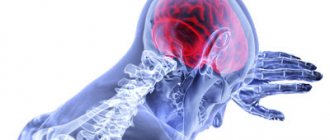As the world's population increases, people are increasingly at risk of various pathologies.
A person is born with some of them, others he acquires throughout his life. In addition to physical illnesses, there are also mental disorders of varying severity. For example, mild mental retardation in children is a deviation of the psyche, or rather, its underdevelopment, which can be lived with without isolation from society. This diagnosis is not a death sentence. Such children have the opportunity to feel like full-fledged members of society.
Mental disorders have always caused fear and misunderstanding. Let's try to understand the history of this disease and its nuances. Is everything really as terrible as it might seem at first glance?
General characteristics
Mild mental retardation in children or mental retardation is the most common pathological mental disorder among such diseases. This form of underdevelopment is also known in medical circles as debility. But this name has lost its relevance due to social unacceptability. Children who have been diagnosed with this condition, despite the prejudices imposed by the public, have every chance of leading an independent life in the future.
Qualities and skills that are usually inherent in identifying mental retardation:
- perception of basic abilities in a special education program;
- mastering writing, reading and counting skills at a basic level;
- fairly good mechanical memory;
- concrete visual methods of comprehending information;
- acquisition of certain labor skills;
- gradual progress in mental development.
Mental retardation affects the formation of cognitive processes, logical thinking and motivational influence. A mild form of deviation allows over time, although not to reach the level of one’s peers, at least to master the skills necessary for life.
Underdevelopment of the psyche and intellect can be formed due to the following reasons:
- Heredity or genetic predisposition.
- Intrauterine disruption of fetal development due to infection or injury. The effects of toxic drugs taken during pregnancy.
- Trauma sustained during childbirth, pathologies of the central nervous system during premature pregnancy.
- Acquired infections, the action of which is aimed at destroying brain cells. These may be the consequences of meningitis, syphilis, encephalitis.
Retardation can also be observed in the physical development of the child in the form of impaired motor functions, deformation of the skull, or changes in the size of the arms and legs. Although these factors are more consistent with moderate and severe mental retardation in children, in some cases they may also be present in a state of mild debility.
In other words, oligophrenia is a condition of a child’s body in which it is difficult for him to maintain the pace of mastering new skills and abilities that are age-appropriate. The child needs a correctional program, after which he will be able to feel like a full-fledged member of society.
Clinical manifestations and dynamics of mental retardation
Mental disorders in mental retardation, as noted above, are polymorphic in nature and severity.
Severity of intellectual defect.
According to the severity of insufficiency of intellectual abilities in ICD-10, the following are distinguished:
1. Profound mental retardation (idiocy).
In idiocy, cognitive abilities are significantly limited: patients are practically unable to understand speech addressed to them, do not recognize the people caring for them (for example, mother), do not distinguish edible from inedible (they can eat inedible objects), have no idea of spatial relationships (for example , about height: they can fall from a great height), rarely form ideas about hot, sharp, etc. (they can get damaged, burns). Most patients are not able to master even the simplest self-care skills (get dressed, wash, use cutlery, etc.). Speech is either not formed at all (such patients produce only inarticulate sounds) or consists of several simple words. The motor functions of patients are significantly underdeveloped, and therefore many of them cannot stand or walk independently and move by crawling. Behavior in some cases is characterized by lethargy, inactivity, in others - a tendency to monotonous motor excitation with stereotypical movements (swaying the body, waving arms, clapping hands), and in some patients with periodic manifestations of aggression and auto-aggression (they can suddenly hit, bite others, scratch themselves, hit themselves, etc.). In most cases, severe neurological disorders and severe somatic abnormalities occur. The life of such patients, who need constant care and supervision from others, is determined by the satisfaction of the simplest needs of life. The IQ (D. Wechsler’s standardized method for measuring intelligence) in persons with severe mental retardation is below 20.
2. Severe mental retardation (severe variants of imbecility)
Cognitive activity is limited by the ability to form only the simplest ideas; abstract thinking and generalizations are inaccessible to patients. Patients acquire only basic self-care skills; their training is impossible. The vocabulary is limited to one to two dozen words, sufficient to communicate one’s basic needs, and articulation defects are pronounced. Neurological disorders and gait disturbances are often present. Patients need constant monitoring and maintenance. The IQ of these patients ranges from 20-34.
3. Moderate mental retardation (variants of mild and moderate imbecility)
These patients are able to form a larger number and more complex ideas than patients with severe mental retardation. Patients master self-care skills and can be accustomed to simple work by training in imitative actions. Their vocabulary is richer, they are able to express themselves in simple phrases and maintain a simple conversation. Relative adaptation of patients with moderate mental retardation is possible only in conditions that are well known to them; any change in the situation can put them in a difficult position due to the impossibility of moving from specific ideas obtained through direct experience to generalizations that allow them to transfer existing experience to new situations. Patients cannot live independently and need constant guidance and control. Some of them can perform simple work in specially created conditions (for example, in occupational therapy workshops). The IQ of these patients is in the range of 35-49.
4. Mild degree of mental retardation (debility).
Cognitive disorders in these patients include difficulty in forming complex concepts and generalizations, the impossibility or difficulty of abstract thinking. Their thinking is predominantly concrete and descriptive, and everyday speech is quite developed. Patients with mild mental retardation are capable of mastering special programs based on concrete visual learning, which is carried out at a slower pace, as well as the ability to master simple labor and professional skills. Due to the relatively higher rate of mental development in patients with mental retardation than in other degrees of mental retardation, satisfactory adaptation to normal living conditions is possible in many cases. Often these patients show good practical awareness (“their skills are greater than their knowledge” - E. Kraepelin). Many patients with mild mental retardation graduate from specialized schools and vocational schools, work productively, start families, and run their own households. Compared to other degrees of oligophrenia, the personality and character traits of patients are more differentiated and individual. However, these patients have difficulty forming their own judgments, but easily adopt the views of others, sometimes falling under the unhealthy influence of others (for example, they can be involved in the delusional experiences of mentally ill patients with the formation of induced delusions, or become a tool in the hands of attackers who manipulate them for their own gain) . The IQ of these patients is in the range of 50-69.
Emotional-volitional disorders
Intellectual failure is the most striking manifestation of mental retardation, but it is only part of the general mental underdevelopment of the individual. With oligophrenia, emotional and volitional processes suffer significantly. D.N. Isaev, based on the characteristics of violations of the emotional-volitional sphere, regardless of the severity of mental underdevelopment, identifies the following forms of mental retardation:
1. Stenic.
The volitional processes in these patients have sufficient strength and stability. The patients are efficient and active. With mild degrees of intellectual disability, they have a good ability to adapt and are able to fully use the acquired skills and knowledge. Some patients experience affective instability, so there are two variants of the sthenic form: balanced and unbalanced.
2. Dysphoric.
It is characterized by a constant angry-sad affect, a tendency to dysphoria, impulsive actions, negativism, conflict, and disinhibition of drives. Even with minor intellectual impairment, such patients are incapable of learning and working. During dysphoria, they often show aggression (usually towards loved ones caring for them, and the aggression can be very cruel and sophisticated) and auto-aggression (inflicting deep cuts on themselves, burning their skin with a cigarette, pulling out hair, etc.).
3. Asthenic
. It is characterized by instability of volitional processes, rapid exhaustion, fatigue, slowness, disturbances of attention, difficulties in mastering and using practical skills.
4. Atonic.
It is characterized by an almost complete lack of ability for mental stress and purposeful activity. Patients are either completely inactive or in a state of chaotic motor disinhibition.
Dynamics of mental retardation
In most cases, mental retardation conditions are relatively stable (“non-progressive”). However, sometimes, under the influence of internal and external factors, their positive or negative dynamics are noted. With timely and active implementation of therapeutic, correctional and educational measures, the majority of patients suffering from mild and moderate mental impairment are able to work. In the process of age-related evolution and under the influence of therapeutic measures, there is a reduction in motor disinhibition, impulsivity, negativism, asthenic conditions, etc. Negative dynamics of mental retardation is possible with the addition of additional pathogenetic mechanisms of brain damage (for example, amyloid deposition in Down's disease), under the influence of additional external hazards (traumatic brain injuries, alcoholism, etc.), psychogenia, unfavorable social environment, during periods of age-related crises, etc. Decompensation in mental retardation can manifest itself as cerebroasthenic and psychopathic disorders, psychoses with stupefaction, hallucinatory-delusional, affective psychoses, etc. .
Features of behavior
Since all children differ from each other in temperament, manner of communication and behavior, it is difficult to visually determine the mental retardation of a child, and even more so to do this at an early age. But still, with a more detailed study of children's relationships, one can notice signs of mental underdevelopment. These include:
- lack of interest in animals, new, colorful objects or toys;
- weak contact with peers;
- misunderstanding of the requirements of the game;
- lack of incentives for intellectual development, characteristic of children at an early age;
- increased desire for physical activity, unfocused games;
- expression of emotions only through primitive reactions, instability of mental state;
- problems with mastering self-care skills.
Children with mild mental retardation develop weakened attention over time and have difficulty concentrating thoughts in a certain direction. Mental performance slows down, and it is difficult for the child to navigate in society. The baby gets tired quickly and doesn’t know what to do next.
The connection of a little person with reality occurs through auditory, visual, visual and other processes. Since their processing is not fully accessible to the brain, the perception of the surrounding world is distorted.
Classification of mental retardation
There are different approaches to classifying mental retardation conditions. The most common clinical classification is the division of mental retardation according to the degree of intellectual defect. Traditionally, there were three degrees of mental retardation: debility, imbecility and idiocy. In the International Classification of Diseases, 10th revision (ICD-10), mental retardation is presented in a separate section (F7) and is divided according to severity into four degrees: mild (F70), moderate (F71), severe (F72) and profound (F73). Another clinical classification involves the division of mental retardation states (regardless of the depth of mental underdevelopment) into sthenic, dysphoric, asthenic and atonic forms (D.N. Isaev). In addition, there are “nuclear” forms of mental retardation (N.I. Ozeretsky), which are characterized by the totality of mental underdevelopment, affecting the entire psyche as a whole, and atypical forms, which are characterized by an uneven structure of mental defect with signs of partial mental underdevelopment.
According to etiopathogenesis, mental retardation conditions are divided into three main groups (G.E. Sukhareva):
1. conditions caused by hereditary (gene and chromosomal) diseases
. This group includes: Down syndrome, Klinefelter syndrome, Turner syndrome, Martin-Bell syndrome, true microcephaly, enzymopathic forms associated with hereditary metabolic disorders (phenylketonuria, galactosuria, etc.), hereditary neurological and neuromuscular diseases with mental retardation.
2. conditions caused by the action of various hazards during intrauterine development (embryopathy and fetopathy).
This includes conditions caused by intrauterine infections (rubella viruses, influenza, paratitis, cytomegalovirus, pathogens of syphilis, toxoplasmosis, etc.), intoxications (for example, alcohol), hemolytic disease of the fetus, etc.
3. conditions caused by the action of various hazards during childbirth or in the first months and years of life.
There are mental retardation associated with birth trauma and asphyxia during childbirth, with traumatic brain injuries and neuroinfections suffered in early childhood.
In many cases, it is not possible to reliably identify the etiological causes of mental retardation, therefore such conditions are designated as undifferentiated
forms.
In turn, differentiated
forms of mental retardation are nosologically independent diseases with an established etiopathogenesis and characteristic clinical picture. Often, in differentiated forms, mental retardation is only one of the symptoms among other severe manifestations of these diseases.
Types of diagnostics
Some experts believe that determining a child’s mental retardation as a diagnosis before the age of seven is impossible. Only after this period can we talk about any developmental deviations, since the child’s psyche can be formed in a completely unpredictable way.
Periods of active development are followed by long pauses, and these cycles can be repeated regularly. You should seek help from specialists when violations are noticeable in areas such as:
- memory;
- intelligence;
- thinking;
- emotional sphere;
- cognitive functions;
- volitional manifestations;
- coordination and plasticity of movements;
- ability to fix attention.
The degree of mental retardation is diagnosed according to three criteria:
- Clinical picture indicated by damage to brain centers.
- Persistent psychological disturbance of the desire for cognitive activity.
- Low level of learning ability.
A very important factor when performing diagnostic procedures to determine oligophrenia is an ophthalmological examination and X-ray computed tomography of the brain. An eye examination allows you to recognize at the early stages of development such concomitant diseases as:
- retinal pigment degeneration;
- glaucoma;
- cataract;
- microdisturbances of visual nerve endings;
- intracranial hypertension.
A tomograph helps to determine hidden deviations in the structure of the skull, the presence of intracranial pressure, and brain pathologies.
Differentiated forms of mental retardation
Conditions caused by hereditary (gene and chromosomal) diseases
Down syndrome
Caused by trisomy 21 chromosomes. It was first described by the English physician J. Down in 1866, but the connection between the violation of the number of chromosomes and the clinical manifestations of the disease was established only in 1959 (J. Lejeune). The birth rate of children with Down syndrome is approximately 1:700, but currently, due to the possibilities of prenatal diagnosis, there is a tendency to reduce it. The most important risk factor for this chromosomal aberration is the age of the mother (over 35 years).
Clinical manifestations:
Mental retardation in Down syndrome can be expressed in different ways, most often it is moderate and severe, less often mild. Patients have a late appearance and pronounced underdevelopment of speech (insufficient understanding of speech, poor vocabulary, dysarthria). Children with Down syndrome are usually unable to learn even in a special school program and require individual education. The emotional sphere remains quite intact: for the most part, patients are affectionate, obedient, attached to their parents, friendly, good-natured (“sunny children”), although they can be stubborn. Many of them are curious and have a good ability to imitate, which contributes to the development of self-service skills and simple work processes. Indifferent and angry patients are rare. As a rule, children with Down syndrome develop better in parental families, feeling the care of loved ones, but even in this case, they do not achieve a satisfactory level of social adaptation and need constant care.
A feature of the age-related dynamics of Down's disease is late puberty and early appearance of signs of involution (at 30-40 years). With Down syndrome, there is a high incidence of early development (after 35 years) of atrophic changes in the cerebral cortex and accumulation of amyloid in the form of senile plaques, i.e. morphological changes similar to Alzheimer's disease. At the same time, patients quickly lose everyday skills and vocabulary, become inactive, indifferent, and neurological disorders appear.
Patients with Down syndrome are characterized by a specific physical phenotype, determined by many stigmas of dysontogenesis, which makes it possible to diagnose this condition at birth. Children are usually small in stature; at birth they often have low body weight (up to 2500 g). Head circumference is reduced. The face is flat, Mongoloid eye shape (the first name for the syndrome is “Mongolism”), wide bridge of the nose, short nose, occasionally spotted coloring of the central part of the iris is observed; Cataracts are common. The tongue is large, striated, the mouth is half open. The ears are small and flat. The hands are wide, the fingers are short, there is a transverse groove on the palmar surface of the hand. Pathologies of the structure of the cardiovascular system, endocrine disorders (hypofunction of the thyroid gland, pituitary gland, adrenal glands, gonads), and muscle hypotension are often encountered. Characterized by increased susceptibility to infections. The life expectancy of patients is significantly reduced, no more than 10% live more than 40 years.
Turner syndrome (Shereshevsky-Turner)
Monosomy of the X chromosome (45, X0). Prevalence 1:3300 newborns.
Clinical manifestations:
Mental retardation is found only in some patients; usually mild. Patients are hardworking and complacent. Many patients have criticism of their condition and experience a defect; there is a tendency to neurotic reactions
Congenital anomalies of the structure give patients a peculiar appearance: short stature (usually does not exceed 150 cm), disproportionate physique (predominance of the upper body, broad shoulders, narrow pelvis, shortening of the lower extremities, constitution approaches that of a man). The neck is short with excess skin on the posterolateral surface, which in many patients appears as a cervical fold. Signs of sexual infantilism are revealed (the external genitalia are underdeveloped, the mammary glands are not developed, the nipples are retracted, pubic and axillary hair is absent or scant). Characteristic signs are primary amenorrhea, anomalies in the structure of the internal genital organs.
Klinefelter's syndrome
Disomy on the X chromosome in men (47, XXY). Prevalence 1:1400 newborns (boys).
Clinical manifestations:
Mental retardation occurs in about a quarter of patients, mostly in a mild degree. There is marked immaturity of the emotional-volitional sphere. Many patients often have a consciousness of their inferiority, which becomes a source of internal conflict; neurotic and pathocharacterological reactions are characteristic. Cases with depressive, hypochondriacal, obsessive, and schizophrenia-like disorders have been described
Appearance of patients: characterized by tall stature, asthenic build, narrow shoulders, elongated limbs, poorly developed muscles. Constant signs of Klinefelter syndrome are underdevelopment of the genital organs and infertility. Approximately half of the patients have gynecomastia and eunuchoid signs. In the neurological status, in some cases there is muscle hypotonia and diencephalic-vegetative disorders such as panic attacks.
Mental retardation caused by hereditary metabolic defects
Phenylpyruvic mental retardation (phenylketonuria, PKU, Felling's disease)
- a hereditary metabolic disorder (characterized by an autosomal recessive type of inheritance), caused by a deficiency of one of the metabolic enzymes of the amino acid phenylalanine, which leads to impaired oxidation of phenylalanine into tyrosine, insufficient synthesis of catecholamines (adrenaline and norepinephrine), thyroid hormones, melanin, serotonin. As a result, a gradual accumulation of phenylalanine and its metabolites occurs in the body, which have a toxic effect on the central nervous system, and a deficiency of hormones and mediators of the nervous system is formed with further delay in mental development. Phenylalanine and its metabolites (phenylketone substances) are excreted in the urine. There are significant ethnic differences in the prevalence of phenylketonuria. In Russia, the frequency among newborns is 1:6-10 thousand.
Clinical picture:
Children with phenylketonuria are born with a normally formed and functionally complete brain (since the biochemical processes of the fetus are ensured by the mother's metabolism). Biochemical disorders begin to develop immediately after birth. Already at 4-6 months. a lag in psychomotor development is revealed, which progresses noticeably. The comprehensive clinical picture of the disease includes severe or profound mental retardation, behavioral disorders and catatonic disorders (states of psychomotor agitation, impulsive actions, stereotypic movements, echopraxia, echolalia, substuporous states), asthenic states. An increase in muscle tone, convulsions (in 30% of patients), hyperkinesis, tremor of the fingers, ataxia, impaired coordination, and enuresis are often detected. Pigmentation defects are characteristic (most patients are blond, with light, pigmentless skin and blue eyes). Urine has a peculiar smell (“smell of wolf”, “mouse”, “musty”). Biochemical diagnosis of phenylketonuria is based on a positive reaction of urine with FeCl3 to phenylpyruvic acid (Felling test) and the detection of an increased concentration of phenylalanine in the blood plasma.
Phenylketonuria is an example of a hereditary disease with the possibility of a good effect with timely preventive therapy: to prevent the development of mental and neurological disorders from the first months of life until 10-12 years of age, diets with a sharp restriction of phenylalanine are used (animal protein is completely excluded, vegetable protein is significantly excluded, protein deficiency is compensated for by special mixtures of amino acids without phenylalanine). The sensitivity of nervous tissue to the toxic effects of phenylalanine metabolic products, as well as to other metabolic disorders, is highest at an early age (during brain maturation). After the completion of the myelination process, the increase in phenylalanine in the blood no longer has a pathogenic effect on the brain.
Mental retardation caused by exposure to harmful substances during intrauterine development (embryopathy and fetopathy)
Mental retardation caused by rubella virus (rubeolar embryopathy).
When a pregnant woman contracts rubella in the first trimester of pregnancy, embryopathy develops with gross structural disturbances of the nervous system (microcephaly, porencephaly), hearing and vision organs, and congenital defects of internal organs. Mental retardation in such patients is usually severe, and convulsive seizures are frequent.
Mental retardation caused by hemolytic disease of the fetus and newborn
. Hemolytic disease of the fetus (erythroblastosis fetalis) is caused by a Rh conflict between mother and child, which leads to hemolysis of fetal red blood cells, anemia, high bilirubin levels, circulatory disorders, edema, and increased intracranial pressure. One of the consequences of this condition may be the formation of mental retardation, the severity of which varies.
Mental retardation caused by maternal alcoholism (alcoholic fetopathy).
Develops when mothers drink alcohol during pregnancy. According to a number of authors, it ranks first among the causes of mild mental retardation. The clinical picture consists of mental retardation (mostly mild), delayed physical development (especially pronounced at birth and in the first years of life), disturbances in the structure of the skull (microcephaly, shortening of the palpebral fissures, underdevelopment of the bones of the middle part - a convex forehead, a short nose with a wide flat nose bridge, hypoplasia of the upper jaw).
Conditions caused by exposure to harmful substances during childbirth or in the first months and years of life
Mental retardation caused by birth trauma or asphyxia during childbirth
. Mechanical damage to the baby's skull during childbirth can lead to intracranial hemorrhages or even direct damage to the brain and its membranes. Oxygen starvation causes metabolic disorders in nervous tissue. These factors can lead to the formation of organic pathology of the brain and, subsequently, mental retardation (the severity of which may vary). Birth injuries are characterized by focal neurological disorders, seizures, and sometimes hydrocephalus.
Mental retardation caused by neuroinfections suffered in early childhood
. After meningitis and meningoencephalitis, mental retardation of varying severity, focal neurological disorders, seizures, and hydrocephalus can develop.
Determining the level of development
Children diagnosed with retardation are able to adapt quite quickly to those around them. It is possible for them to attend kindergarten or primary school on general terms, without a special program. Of course, they are not able to achieve any special success, but mastering the necessary minimum of knowledge is quite possible.
However, psychiatrists still recommend training children with mild retardation in specialized educational institutions. Now they are called schools of the eighth type, and their program fully corresponds to this intellectual level.
A child with a slight mental retardation commits actions that lack any purpose or motivation. His behavior is dominated by:
- the desire to imitate, copy actions;
- lack of independence, naivety and suggestibility;
- depending on the situation or circumstances.
Many parents are afraid to send a child with such disabilities to a special school, explaining that the child will be better off in a calm family environment. By expressing such judgments, they reassure themselves, while depriving the child of a chance for a full existence in society.
Work with mentally retarded children should be carried out by specialists together with parents and be aimed at activating the main lines of intellectual development. To do this, parents need to thoroughly study the baby’s behavior in various situations, his habits and characteristics. Based on these observations, the level of development is established.
"Let me be accepted"
It is very important to understand how to interact correctly in society. Many of the people diagnosed are kind and open and, of course, naive and driven. They may be drawn into bad company. It is important to teach how to recognize “bad” and “good”, pronounce dialogues, and stage life situations. Such training will help the young person navigate society more easily.
It would be useful to “rehearse” extreme situations: “what to do if a fire starts,” “what to do if you get lost.” We teach this to healthy children, however, mentally retarded people need such training for much longer. Patience and understanding should be shown here.
General condition of the child
Unexpressed mental retardation may have virtually no effect on physical development. Children with intellectual pathologies are able to achieve success in many sports disciplines. By directing their efforts in the right direction and not focusing on shortcomings, they will be able to take their place in society.
The emotional background in mental retardation is very unstable; it is difficult for a child to control his feelings, or rather, the transitions from one state to another. According to his age, he experiences different sensations:
- joy;
- delight;
- sadness;
- irritation;
- anger, etc.
Such children lack a sense of compassion and spiritual understanding of the emotions of others. They cannot think about events or their consequences in the future. The life of a child with mild mental retardation happens here and now. He doesn't worry about what will happen tomorrow.
Such a child has weak manifestations of volitional efforts. In other words, it is as if he agreed to some action, but cannot bring himself to do it, while he himself cannot explain the reason for his behavior.
FEATURES OF CHILDHOOD DEMENTIA
Preschool age only forms a personality, which is characterized by many factors: developmental characteristics, temperament, individuality.
Only after the child goes to school can parents identify a developmental disorder. Such children practically do not master the program. It is not possible to attract the attention of oligophrenics and fix it on something. Difficulties arise with memorization and retelling—children suffering from ID are unable to retain received information in memory for a long time.
A “special” student usually does not understand the essence of the task and does not grasp the connections between things and phenomena. It is very easy to intimidate him in such a situation: you just have to shout, and the psychological trauma that follows the stress is inevitable.
Depending on the environment, such a child can develop into two completely different personality types:
- kind and sympathetic, ready to help at any moment, vulnerable and warm-hearted;
- embittered and aggressive, who, having no desires and feelings of their own, are subject to the negative influence of others.
A practicing psychotherapist shared the story of a boy who was doomed to mental illness while still in utero development. A dysfunctional mother carried a child in violation of all acceptable rules: she smoked, drank alcoholic beverages, and took psychotropic drugs. After the birth of the child, he was deprived of proper attention.
After some time, the visiting nurse noticed some mental underdevelopment of the baby: he could not hold his head up on his own and did not make any sounds. Thanks to the prompt and coordinated work of medical workers, the boy was saved. And at the moment it has practically adapted to modern living conditions.
A predisposition to mental illness or unacceptable behavior of a pregnant woman is a reason to warn her about the possible dementia of the unborn child.
However, a loving and caring mother who leads a healthy lifestyle and has absolutely no prerequisites for the occurrence of mental pathologies can also face the problem of dementia in her child.
Having noticed the first alarm bells, which are a definite reason for consultation, you must immediately contact a qualified specialist. This will give you the opportunity to deeply adapt your baby to society before the moment of his socialization.
Formation of the speech apparatus
It is by speech disorders that the degree of mental retardation in children can be determined. The easy form assumes a fairly large vocabulary, although it is used with a violation of the semantic load. The conversation consists of short, monosyllabic phrases that the child hears most often in his environment. It is possible to use individual words and expressions only out of habit, at random.
Memorizing new words and definitions must be accompanied by visual or tactile confirmation. But still, this happens slowly and not fully.
Speech development directly depends on the degree of mental retardation of the child. The mild form is characterized by incorrect pronunciation of some letters of the alphabet. The presence of speech defects such as:
- dysarthria;
- stuttering;
- tongue-tied.
With such problems, classes with a speech therapist have a positive dynamic, but the recovery process is very difficult and lengthy.
Intelligence level
The intellectual development quotient, as a rule, ranges from 69 to 50 points. This is quite high, whereas mild mental retardation in children allows them to have an IQ of 49 to 35.
Having a sense of humor is a big problem. Such children perceive everything concretely and literally. Metaphors and aphorisms used by the interlocutor in a conversation are just words without meaning for them.
The main sign of a child with mental retardation is the absence of abstract logical thinking. How is this expressed?
- inability to highlight the main thing and cut off the unnecessary;
- the impossibility of classification and generalization;
- primitiveness of thinking.
Quite simple questions drive the child into a dead end; there is practically no logic in the reasoning. By repeating actions many times, he can grasp the pattern and, by analogy, continue the thought. However, the slightest deviation from the pattern causes difficulties.
Causes
There are quite a few possible causes of mental retardation, not all of them have been sufficiently studied. It has been established that in cases of mental retardation, a decrease in intelligence is caused by organic damage to the brain, and, unfortunately, it is not always possible to say with certainty why this damage occurred in a particular patient.
Causes of mental retardation:
- hereditary predisposition;
- harmful factors affecting the mother's body during pregnancy, such as some antibiotics and contraceptives, alcohol and drugs;
- infections, especially viral: rubella, influenza;
- diseases that the woman had before pregnancy: toxoplasmosis, syphilis, hepatitis, diabetes mellitus, heart disease;
- severe toxicosis during pregnancy, Rh conflict, pathology of the placenta. Risk factors for mental retardation include prematurity, rapid labor, and birth injuries. That is why every woman should be examined by a doctor before planning a pregnancy, and while expecting a child she needs to be especially attentive to her health;
- from men, long-term use of alcohol or drugs, occupational hazards at work, radiation, chemical reagents.
Attention and memory disorder
All healthy children have semantic and mechanical memory. In a state of mental retardation, a child simply does not have a semantic memory, while the mechanical one is well developed. Without semantic memory it is impossible to perform the following actions:
- remembering the essence;
- summarizing the information received;
- retelling the text in your own words.
At the same time, the formed mechanical memory allows you to remember large amounts of information, but since this is done unconsciously, the child cannot use it.
In order to somehow develop the semantic perception of information, you need to be patient and explain to your child several times what he cannot understand. Noticeable progress in memorization can be achieved by clearly showing the cause-and-effect relationships of objects and actions. It is much easier for a child with mild mental retardation to remember simple and understandable things than those whose meaning and purpose are unknown to him.
SIGNS OF MILD UR
Mental underdevelopment with decreased intelligence, congenital or acquired, can be noticed in very young children, three years old. However, the diagnosis is made no earlier than the child reaches seven years of age.
Signs of mental retardation in newborns are almost impossible to detect, especially its mild form. But then this will manifest itself in developmental delays and difficulties in adapting to kindergarten. It is difficult for a child to communicate with peers, find a common language with them, maintain a daily routine, master new skills, and absorb knowledge. He cannot sit in one place, gets tired quickly, does not show any desire to understand the world, and is inattentive.
A child may have a similar but passing problem - mental retardation. The difference is that a child with mental retardation is not always able to learn a new skill, while a child with mental retardation still learns it after several repetitions.
This is why it is so important to detect the symptoms of MR early in order to begin corrective measures immediately. Here they are:
- Abnormal motor development. The baby begins to hold his head up late, tries to sit up, stand up, and walk. His grasping reflex is impaired, he is unable to hold a toy, and a little later, a spoon.
- The processes of excitation and inhibition are unbalanced - the baby is overly impulsive, irritable, or excessively lethargic and slow.
- Belated babble. He begins to speak with a significant delay or there is no speech at all. The child is not able to speak coherently, as it is difficult for him to construct a sentence. He does not understand what is being said to him, so he cannot fulfill even basic requests.
- Poor emotional-volitional sphere, self-isolation, lack of interest in what is happening around.
- There is no interest in toys, their incorrect use prevails, preference is given to primitive games.
- There is no abstract thinking, that is, logic, mathematical and creative abilities.
A few words should be said about emotions: the child experiences grief and joy, hostility and sympathy, is sad and happy, but all this is expressed very weakly, not in many ways.
Outwardly, such a child is no different from his peers. But his inability to concentrate properly leads to learning difficulties.
Children with a mild degree of ID are afraid of a change of environment and are highly dependent on their parents and educators. Difficulties in recognizing emotions create problems with communication, so kids withdraw into themselves. But it is also possible that they draw attention to their person in different ways, often very awkward.
Such individuals are well aware that they are different from healthy people, so they take measures to conceal their problem. Many people manage to gain self-care skills, although this happens more slowly than their peers. The school period is especially difficult for them, since writing, reading and mathematics are difficult for them.
Specifics of education
It is very important to find the right approach to a child with such a disease. Usually this is not difficult to do, since such children are simple-minded and kind. The main task of parents is to correctly set priorities in raising a special child. The amount of acquired knowledge here fades into the background, and preference should be given to completely different values:
- creating a comfortable, favorable, calm environment in the family;
- the desire for love and understanding;
- devoting a large amount of time to communicating with the child;
- the formation of a socially adapted personality, ready for independent life outside the home.
In suitable conditions, such children successfully master the basics of reading, writing and counting, and learn basic work skills. They are happy to carry out simple tasks, help with household chores, and do handicrafts.
With mild retardation, good results are achieved by friendly conversations with the child, educational games, and reading books. Constant communication and systematic intellectual activities protect the brain from degradation and stimulate the development of intellectual activity. The baby enjoys such activities and over time takes the initiative.
The correct behavior of the mother plays a huge role in raising a child. Having discovered any abnormalities in their own child, any normal parent will be horrified and begin to panic. This, as you know, does not give any results, so the best solution would be to contact a specialist. Correcting the moral and psychological state of the mother is the key to a happy future child.
If parents are interested in the maximum development of their mentally retarded child, then they must make every effort to find the necessary methods and techniques for interacting with his psyche. In any case, you will need the help of specialists: both for training and for establishing contacts with others.








